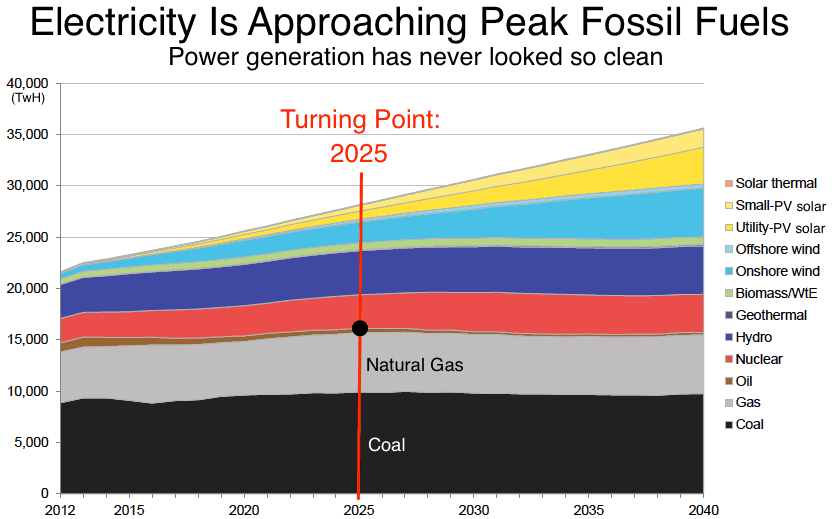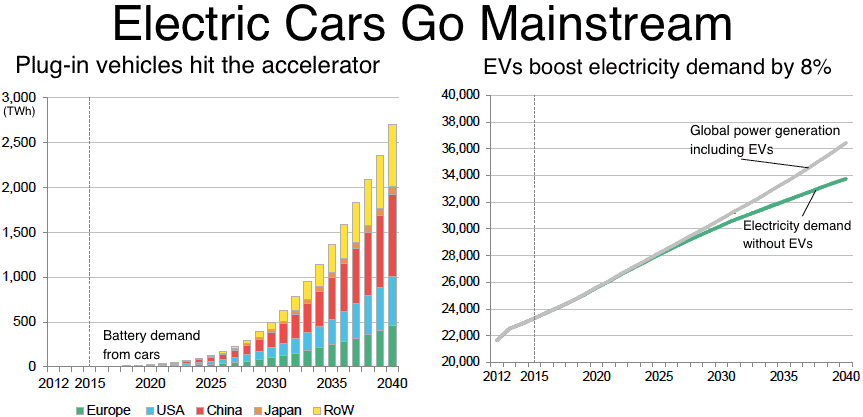The golden age of black oil is ending says a new report from Bloomberg New Energy Finance.

At this point, the oil industry almost looks like a raid boss – a huge black dragon, attacked from all sides by smaller opponents. It’s still the biggest thing around, no one can really go against it directly, but they’re just slowly advancing into its territory more and more, taking more of its share. The opponents in this metaphor are renewables. The Bloomberg report predicts that wind and solar will be cheaper than coal and gas generators in about ten years (2027), and electric vehicles could take a quarter of the car market by 2040.
The peak for oil and coal seems to be 2025 – and it’s all downhill from there.

“You can’t fight the future,” says lead researcher, Seb Henbest. “The economics are increasingly locked in.”
Henbest projected that US$11.4 trillion will be invested in new energy sources over the next 25 years, with two thirds going in to wind and solar. Humanity’s electricity demand is still rising and investments in fossil fuels will add up to $2.1 trillion through 2040. But that will be dwarfed by $7.8 trillion invested in renewables, including $3.4 trillion for solar, $3.1 trillion for wind, and $911 billion for hydro power, they write.
“Some US$7.8 trillion will be invested globally in renewables between 2016 and 2040, two-thirds of the investment in all power generating capacity, but it would require trillions more to bring world emissions onto a track compatible with the United Nations 2 degrees Celsius climate target,” says Henbest.
Coal and gas will also get cheaper, but that won’t derail the renewable advance. It’s just that prices for wind and solar are dropping much faster than those for coal. Home batteries will also become more efficient, fueling the expansion even further and ushering in a golden age for electric cars.
They also make another interesting point: India, not China, will drive most of the world’s increase in emissions in the future. China has imposed itself as the biggest polluter, but their evolving economic is expected to make a quick shift towards renewables and away from the coal energy which powered its growth. That leaves India as the biggest emerging threat when it comes to emissions. India’s electricity demand is expected to quadruple by 2040, and the country will need all the electricity it can get to power this growth. Sure, India is investing heavily into solar energy at the moment, but that’s just a part of it.
Fossil fuels won’t go away anytime soon, but they’re cornered, and it seems like their days are numbered.
You can access the report online here.






